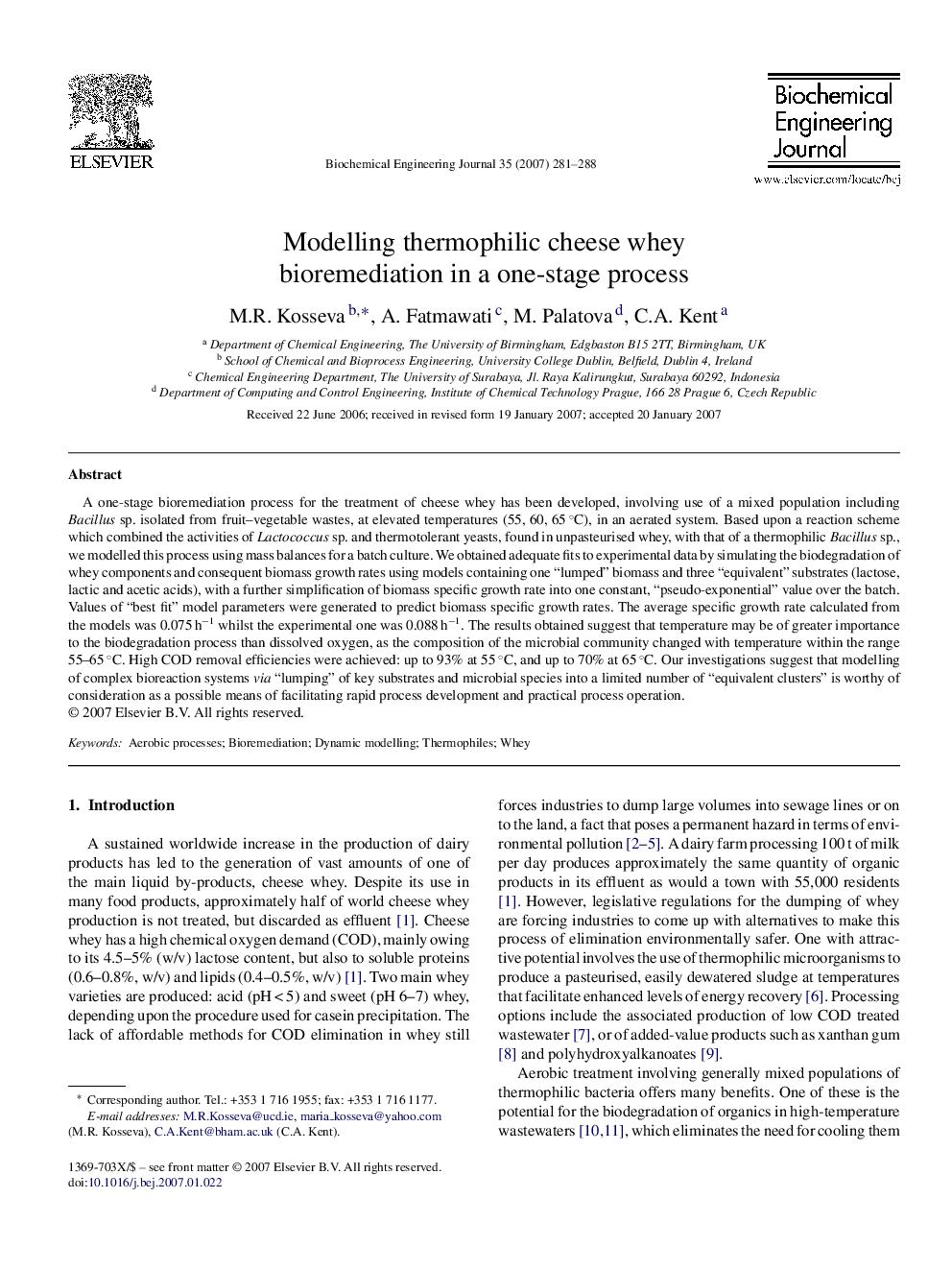| Article ID | Journal | Published Year | Pages | File Type |
|---|---|---|---|---|
| 4701 | Biochemical Engineering Journal | 2007 | 8 Pages |
A one-stage bioremediation process for the treatment of cheese whey has been developed, involving use of a mixed population including Bacillus sp. isolated from fruit–vegetable wastes, at elevated temperatures (55, 60, 65 °C), in an aerated system. Based upon a reaction scheme which combined the activities of Lactococcus sp. and thermotolerant yeasts, found in unpasteurised whey, with that of a thermophilic Bacillus sp., we modelled this process using mass balances for a batch culture. We obtained adequate fits to experimental data by simulating the biodegradation of whey components and consequent biomass growth rates using models containing one “lumped” biomass and three “equivalent” substrates (lactose, lactic and acetic acids), with a further simplification of biomass specific growth rate into one constant, “pseudo-exponential” value over the batch. Values of “best fit” model parameters were generated to predict biomass specific growth rates. The average specific growth rate calculated from the models was 0.075 h−1 whilst the experimental one was 0.088 h−1. The results obtained suggest that temperature may be of greater importance to the biodegradation process than dissolved oxygen, as the composition of the microbial community changed with temperature within the range 55–65 °C. High COD removal efficiencies were achieved: up to 93% at 55 °C, and up to 70% at 65 °C. Our investigations suggest that modelling of complex bioreaction systems via “lumping” of key substrates and microbial species into a limited number of “equivalent clusters” is worthy of consideration as a possible means of facilitating rapid process development and practical process operation.
